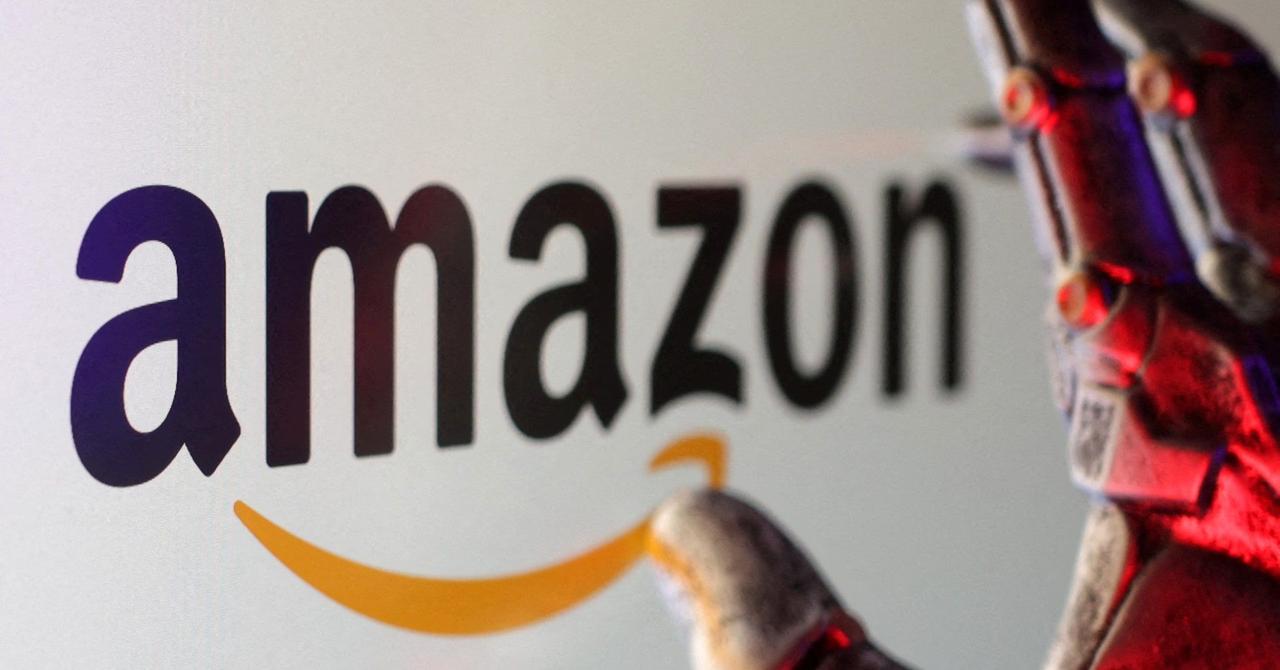Amazon's Ambitious Expansion: From AI-Powered E-commerce to Healthcare and Robotics
2 Sources
2 Sources
[1]
Amazon wants to be everything to everyone
Amazon is expanding its e-commerce reach and integrating more deeply into daily lives. This includes faster delivery, robotic advancements, virtual healthcare, and personalized AI tools. They aim to offer rapid prescriptions delivery and will open an automated micro warehouse next year. These efforts aim to make shopping more efficient and convenient for customers.Amazon is bolstering its e-commerce empire while continuing a march deeper into people's lives, from robots to healthcare and entertainment. Innovations unveiled in recent days by the Seattle-based tech titan included a delivery van computer system to shave time off deliveries by its speed-obsessed logistics network. Amazon Stores boss Doug Herrington said that the technology enables vans to recognize stops and signal which packages to drop off. "When we speed up deliveries, customers shop more," Herrington said. "For 2024, we're going to have the fastest Prime delivery speeds around the world," he added, referring to Amazon's subscription service. On top of that, according to Herrington, Amazon last year managed to cut 45 cents off the cost per unit shipped, a huge savings when considering the massive volume of sales. - Prime is the 'glue' - Amazon last year recorded profit of more than $30 billion on revenue of $575 billion, powered by its online retail operation and its AWS cloud computing division. "They have this whole flywheel model with Amazon Prime membership in the middle," said eMarketer analyst Suzy Davidkhanian. "That's the glue that keeps everything together." Businesses include retail, advertising, cloud computing and streamed movies and music. But that very model has the 30-year-old company facing a US government lawsuit, accused of expanding an illegal monopoly and otherwise harming competition. Amazon makes money from data gathered about consumers, either by targeting ads or through insights into what products they might like, Davidkhanian said. That was why Amazon paid for expensive rights to stream NFL American football games on Prime Video in a move that promises to help it pinpoint fans of the sport. Amazon's digital assistant Alexa can order items on command and has been even built into appliances such as washing machines to let them automatically buy supplies like laundry soap as needed. - A 'pocket pharmacy' - Amazon showed off enhancements to its virtual health care service called One Medical. For $9 a month Prime members are promised anytime access to video consultations with health care professionals, along with record keeping and drug prescriptions. An Amazon Pharmacy takes advantage of the company's delivery network to get prescriptions to patients quickly, striving for speeds of less than 24 hours for 45 percent of customers by the end of next year. "We're building a pharmacy in your pocket that offers rapid delivery right to your door," Amazon Pharmacy chief Hannah McClellan said, referring to the option of using a smartphone app. The healthcare market promises to be lucrative for Amazon, which is "trying to be the platform that has everything for everyone," said analyst Davidkhanian. - Real world wrinkles - Amazon has suffered setbacks when it comes to brick-and-mortar stores but it continues to strive for a winning strategy. The company next year will open its first "automated micro warehouse" in Pennsylvania, next to a Whole Foods Market organic grocery shop, the chain it bought in 2017. People will be able to pick up certain items selected online, with orders filled by robots, after shopping next door for fresh produce and groceries. Meanwhile, Amazon is ramping up use of artificial intelligence at its online store with tools helping sellers describe and illustrate products. Product labels will change according to the user, displaying terms likely to catch their attention such as "strawberry flavor" for some and "gluten-free" for others. "The things that Amazon is doing with AI are to make sure that you go from researching something to making the purchase as quickly as possible," Davidkhanian said. At the logistics center near Nashville, robotic arms deftly placed packages in carts that autonomously made their way to trucks. Logistics center automation improves safety and frees up workers for more interesting tasks, according to Amazon robotics manager Julie Mitchell. However, critics cite delivery speed pressure and other factors as making Amazon warehouses more dangerous than the industry average.
[2]
Amazon wants to be everything to everyone
Amazon is bolstering its e-commerce empire while continuing a march deeper into people's lives, from robots to health care and entertainment. Innovations unveiled in recent days by the Seattle-based tech titan included a delivery van computer system to shave time off deliveries by its speed-obsessed logistics network. Amazon Stores boss Doug Herrington said that the technology enables vans to recognize stops and signal which packages to drop off. "When we speed up deliveries, customers shop more," Herrington said. "For 2024, we're going to have the fastest Prime delivery speeds around the world," he added, referring to Amazon's subscription service. On top of that, according to Herrington, Amazon last year managed to cut 45 cents off the cost per unit shipped, a huge savings when considering the massive volume of sales. Amazon last year recorded profit of more than $30 billion on revenue of $575 billion, powered by its online retail operation and its AWS cloud computing division. "They have this whole flywheel model with Amazon Prime membership in the middle," said eMarketer analyst Suzy Davidkhanian. "That's the glue that keeps everything together." Businesses include retail, advertising, cloud computing and streamed movies and music. But that very model has the 30-year-old company facing a US government lawsuit, accused of expanding an illegal monopoly and otherwise harming competition. Amazon makes money from data gathered about consumers, either by targeting ads or through insights into what products they might like, Davidkhanian said. That was why Amazon paid for expensive rights to stream NFL American football games on Prime Video in a move that promises to help it pinpoint fans of the sport. Amazon's digital assistant Alexa can order items on command and has been even built into appliances such as washing machines to let them automatically buy supplies like laundry soap as needed. Amazon showed off enhancements to its virtual health care service called One Medical. For $9 a month Prime members are promised anytime access to video consultations with health care professionals, along with record keeping and drug prescriptions. An Amazon Pharmacy takes advantage of the company's delivery network to get prescriptions to patients quickly, striving for speeds of less than 24 hours for 45 percent of customers by the end of next year. "We're building a pharmacy in your pocket that offers rapid delivery right to your door," Amazon Pharmacy chief Hannah McClellan said, referring to the option of using a smartphone app. The health care market promises to be lucrative for Amazon, which is "trying to be the platform that has everything for everyone," said analyst Davidkhanian. Amazon has suffered setbacks when it comes to brick-and-mortar stores but it continues to strive for a winning strategy. The company next year will open its first "automated micro warehouse" in Pennsylvania, next to a Whole Foods Market organic grocery shop, the chain it bought in 2017. People will be able to pick up certain items selected online, with orders filled by robots, after shopping next door for fresh produce and groceries. Meanwhile, Amazon is ramping up use of artificial intelligence at its online store with tools helping sellers describe and illustrate products. Product labels will change according to the user, displaying terms likely to catch their attention such as "strawberry flavor" for some and "gluten-free" for others. "The things that Amazon is doing with AI are to make sure that you go from researching something to making the purchase as quickly as possible," Davidkhanian said. At the logistics center near Nashville, robotic arms deftly placed packages in carts that autonomously made their way to trucks. Logistics center automation improves safety and frees up workers for more interesting tasks, according to Amazon robotics manager Julie Mitchell. However, critics cite delivery speed pressure and other factors as making Amazon warehouses more dangerous than the industry average.
Share
Share
Copy Link
Amazon is expanding its reach across multiple sectors, integrating AI and robotics to enhance its e-commerce empire while venturing into healthcare and entertainment, aiming to be an all-encompassing platform for consumers.

Amazon's Ambitious Expansion Across Multiple Sectors
Amazon, the e-commerce giant, is on a mission to become an indispensable part of consumers' daily lives. The company is leveraging its vast resources and technological prowess to expand its reach across multiple sectors, from retail to healthcare and entertainment
1
2
.AI-Powered E-commerce Innovations
At the heart of Amazon's strategy is its relentless focus on improving the e-commerce experience. The company is implementing AI-driven tools to enhance product descriptions and illustrations, making it easier for sellers to list items and for customers to find what they need. This AI integration extends to personalized product labels, which adapt to individual user preferences, displaying terms like "strawberry flavor" or "gluten-free" based on the customer's interests
1
.Revolutionizing Delivery and Logistics
Amazon is doubling down on its commitment to fast delivery. The company has unveiled a new computer system for delivery vans that can recognize stops and indicate which packages to drop off, streamlining the delivery process. Doug Herrington, Amazon Stores boss, emphasized the correlation between faster deliveries and increased customer shopping
1
2
.Robotic Advancements in Warehouses
The company is also making significant strides in warehouse automation. At a logistics center near Nashville, robotic arms efficiently place packages in autonomous carts that navigate to trucks independently. Julie Mitchell, Amazon's robotics manager, claims that this automation improves safety and allows workers to focus on more engaging tasks
1
2
.Expanding into Healthcare
Amazon is making a bold move into the healthcare sector with its One Medical service. For a monthly fee of $9, Prime members can access video consultations with healthcare professionals, along with record-keeping and prescription services. The company is also leveraging its delivery network to create Amazon Pharmacy, aiming to provide rapid prescription delivery to customers
1
2
.Related Stories
The Amazon Prime Ecosystem
At the center of Amazon's strategy is its Prime membership program, which analyst Suzy Davidkhanian describes as "the glue that keeps everything together." This subscription service ties together various Amazon offerings, from retail and advertising to cloud computing and streaming entertainment
1
2
.Challenges and Controversies
Despite its ambitious plans, Amazon faces significant challenges. The company is currently embroiled in a U.S. government lawsuit, accused of expanding an illegal monopoly and harming competition. Additionally, critics argue that the pressure for rapid delivery has made Amazon warehouses more dangerous than the industry average
1
2
.Future Developments
Looking ahead, Amazon plans to open its first "automated micro warehouse" in Pennsylvania next year. This facility, located next to a Whole Foods Market, will allow customers to pick up online orders filled by robots after shopping for fresh produce
1
2
.As Amazon continues to expand its reach and integrate more deeply into consumers' lives, it remains to be seen how the company will navigate regulatory challenges and balance its ambitious goals with concerns about market dominance and worker safety.
References
Summarized by
Navi
[2]
Related Stories
Amazon Revolutionizes Delivery and Logistics with AI-Powered Innovations
05 Jun 2025•Technology

Amazon's $35 Billion Robotics Investment: Revolutionizing Retail Efficiency and AI Integration
26 Feb 2025•Business and Economy

Amazon's Robotics Revolution: Transforming Fulfillment Centers with AI and Automation
12 Oct 2024•Technology

Recent Highlights
1
Google launches Gemini 3 Flash as default AI model, delivering speed with Pro-grade reasoning
Technology

2
OpenAI launches GPT Image 1.5 as AI image generator war with Google intensifies
Technology

3
OpenAI launches ChatGPT app store, opening doors for third-party developers to build AI-powered apps
Technology





